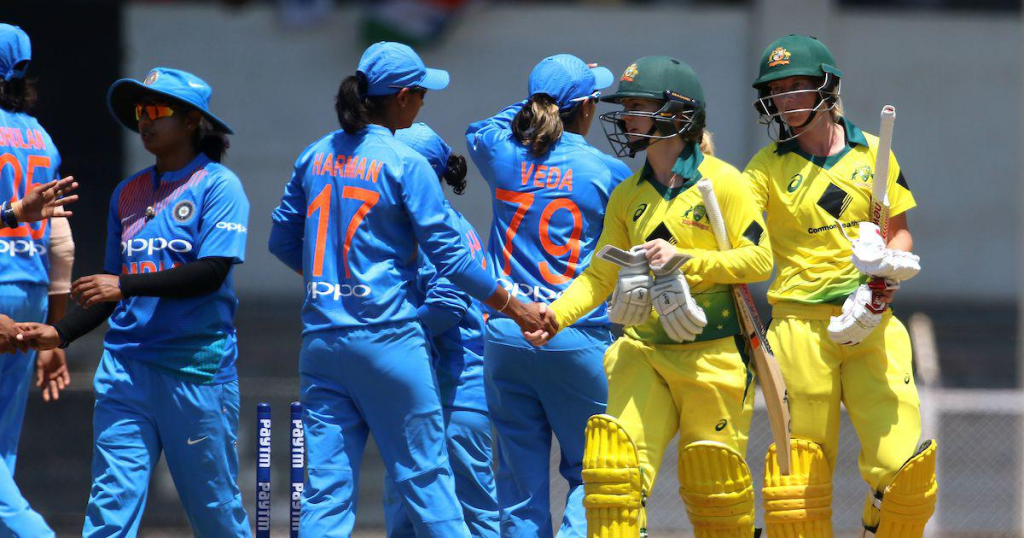The T20 World Cup has been a stage where cricketing giants Australia and India have showcased thrilling encounters, captivating fans worldwide. Their head-to-head battles in this format have been nothing short of spectacular, reflecting the intense rivalry and high stakes associated with such prestigious tournaments.
Early Encounters: The Foundation of a Rivalry
The inaugural ICC Men’s T20 World Cup in 2007 set the tone for the fierce competition between these two nations. In the semi-final, India faced Australia in a high-octane match. Yuvraj Singh’s explosive 70 off 30 balls propelled India to a formidable total of 188/5. Despite Matthew Hayden’s valiant 62, Australia fell short, and India secured a 15-run victory, advancing to the final. This match laid the foundation for a rivalry that would intensify in subsequent tournaments.
Australia’s Dominance in the Early 2010s
The 2010 T20 World Cup semi-final witnessed Australia asserting their dominance over India. Alex Blackwell’s captaincy and a stellar performance led Australia to a seven-wicket victory, marking their first final appearance in the tournament. This win highlighted Australia’s growing prowess in the T20 format and set the stage for future confrontations.
India’s Resurgence and Memorable Victories
India turned the tables in the 2014 T20 World Cup. In a crucial group stage match, Yuvraj Singh once again tormented the Australian bowlers, scoring a match-winning 60 off 43 balls. Ravichandran Ashwin’s exceptional bowling figures of 4/11 dismantled Australia’s batting lineup, leading India to a comprehensive 73-run victory. This win not only showcased India’s resilience but also their tactical acumen in T20 cricket.
The 2016 Classic: Kohli’s Masterclass
The 2016 T20 World Cup clash between India and Australia is etched in cricketing folklore. Chasing 161 in a virtual quarter-final, India found themselves in a precarious position. However, Virat Kohli’s sublime unbeaten 82 off 51 balls guided India to a memorable six-wicket victory with five balls to spare. Kohli’s innings, characterized by precision and aggression, is often hailed as one of the finest in T20 history.
Recent Encounters: A Mixed Bag
In the 2024 T20 World Cup, India and Australia faced off in the Super 8 stage. India posted a formidable total of 205/5, their third-highest in T20 World Cup history, thanks to Rohit Sharma’s blistering 92 off 41 balls. Despite a valiant 76 from Travis Head, Australia fell short, handing India a 24-run victory. This match underscored India’s batting depth and strategic brilliance.
Women’s T20 World Cup: A Rivalry of Its Own
The Australia-India rivalry extends beyond men’s cricket. In the 2024 Women’s T20 World Cup, Australia edged out India by nine runs to secure a semi-final spot. Sophie Molineux’s all-round performance and Annabel Sutherland’s crucial final over highlighted Australia’s depth. Despite Harmanpreet Kaur’s fighting 52, India couldn’t cross the finish line, reflecting the competitive spirit prevalent in women’s cricket.
Statistical Highlights: Players Who Made a Difference
- Yuvraj Singh: Accumulated 160 runs against Australia in T20 World Cups, including two pivotal half-centuries.
- Virat Kohli: Known for his consistency, Kohli has amassed significant runs, with his 82* in 2016 being a standout performance.
- David Warner: For Australia, Warner has been a thorn in India’s side, scoring 160 runs in T20 World Cup encounters.
- Ravichandran Ashwin: With five wickets against Australia in the T20 World Cups, Ashwin’s spin has often troubled the Aussies.
- Shane Watson: A dual threat, Watson has scored 145 runs and taken seven wickets against India in T20 World Cups.
Conclusion
The T20 World Cup encounters between Australia and India have produced some of the most thrilling moments in cricket history. Each match adds a new chapter to this storied rivalry, showcasing the unpredictability and excitement that T20 cricket offers. As both teams continue to evolve, fans worldwide eagerly anticipate future clashes, expecting more fireworks and unforgettable performances.


